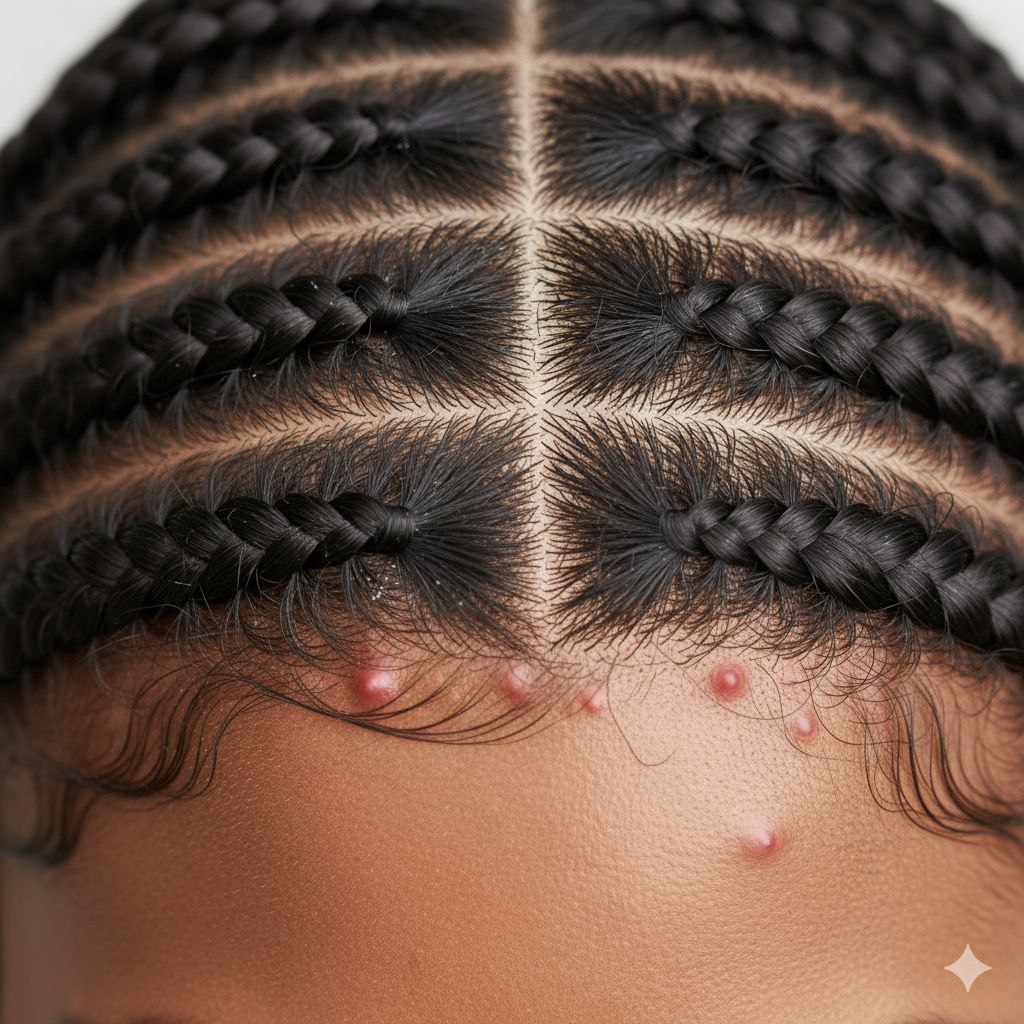Trending Article · 16 mins read
Scalp Care Essentials: The Foundation for Healthy Growth in Type 4 Hair
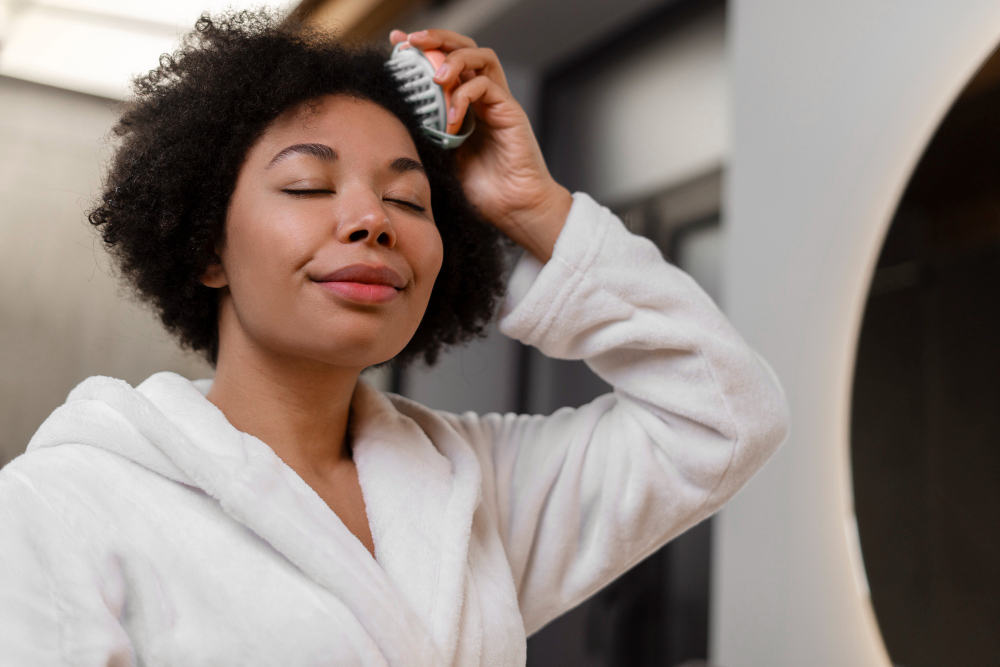
Psst… hey! Come closer, I need to let you in on a secret- Hair growth MAGIC begins from the scalp.
Now keep that secret close to your chest as you read this article.
Let's discuss everything you need to know about scalp care habits to keep your scalp healthy, which will, in turn, grow that beautiful, healthy type 4 hair you desire.
The role of the scalp in healthy hair growth
If you are a plant lover, you know that a beautiful plant always has a healthy soil and sturdy roots. Your scalp plays a similar role to the soil and helps you grow healthy hair. How is that?
- Sebum production: Sebum is a waxy, oily substance produced by the sebaceous glands. Sebum is the scalp's protective shield from bacterial or fungal infections and other harmful microbes. With balanced sebum production, your scalp stays healthy, protected, and hydrated. You also notice that it's shiny.
- Hair growth: The scalp houses the hair follicles, which produce the hair and ensure growth. When the hair follicles are in good condition, the hair that comes out of them is healthy and attractive.
At this point, you can see why we describe the scalp as the soil for hair growth. Healthy soil (scalp) equals healthy hair. But what happens when the scalp isn't functioning as it should?
Problems associated with the scalp
Sometimes, due to itching, dryness, health conditions, and disruptions from insects (lice), there are so many things that could go wrong with the scalp; let's discuss a few.
- Dandruff and itchy scalp: Remember sebum? Well, as great as it is for the scalp, it can also be a problem sometimes. This is how it happens: when too much sebum partners with a fungus, Malassezia globosa, it can lead to the breakdown of scalp oils, which can irritate the scalp. Long-term build-up of these broken scalp oils leads to itching and a buildup of white, flaky or crusty-looking particles, leading to dandruff.
- Scalp eczema (Seborrheic dermatitis): This condition happens when the scalp is inflamed. It becomes flaky, has scaly patches. Cradle cap is a form of seborrheic eczema in infants.
- Balding, hair loss and thinning: Due to some unhealthy or unsafe hair practices, you can notice hair thinning, which starts from the hair follicles. When hair thinning isn't treated, it can lead to hair loss and eventually balding. Apart from balding being a hereditary trait, it can result from bad hair practices or an underlying scalp condition.
Scalp issues are numerous; no need to scare you with the details. Now, let's focus on tips for good scalp care that translates to some TLC for healthy type 4 hair.
Tips to care for your scalp health properly
1. Visit a trained professional
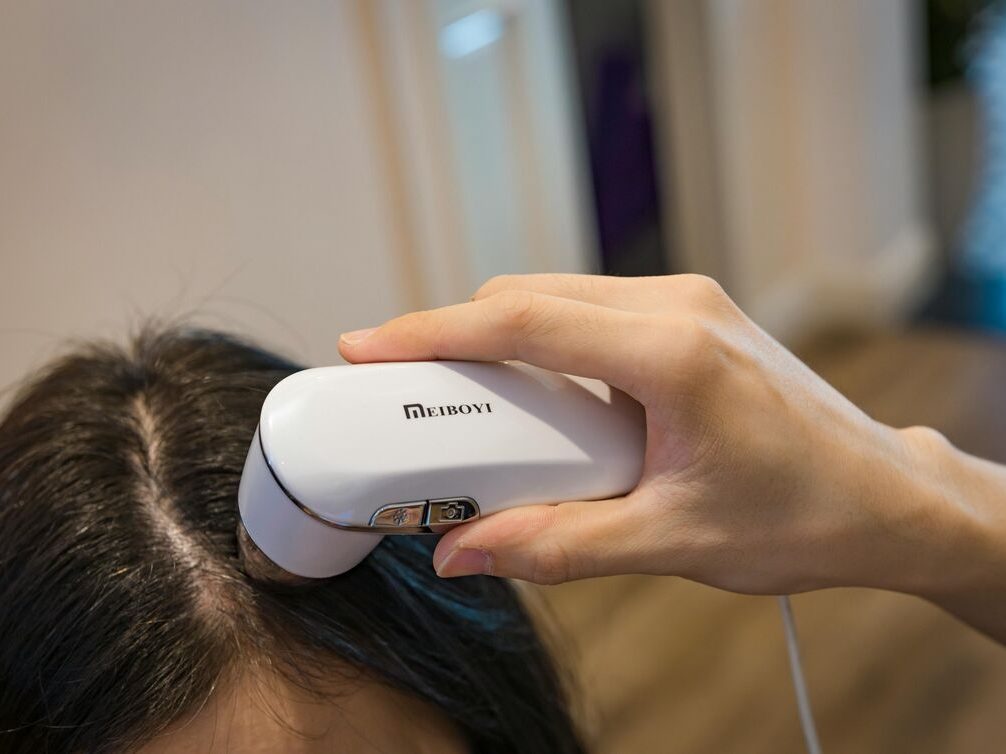
If you notice an unusual patch, growth or appearance of your scalp visit a trained dermatologist or trichologist.
Sometimes, scalp issues can be severe indicators of underlying health problems. Go to a trained person for the right prescriptions or recommendations.
2. Choose good products to promote scalp health
To care for your scalp, choose products that are mild on the scalp yet effective. As a rule of thumb, use a gentle, sulfate-free shampoo and conditioner that’s good for your scalp and hair.
When you choose the right products, every wash day is like a spa date for your scalp 😉.
3. Never underestimate the power of scalp massages for scalp health
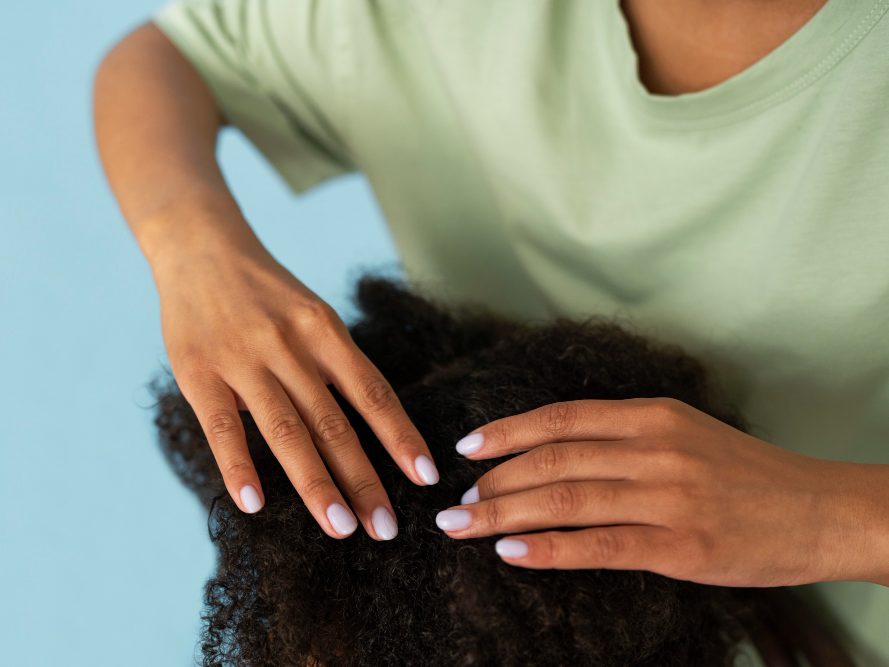
We all love a good massage. It's relaxing and therapeutic. Your scalp deserves such a treat, too. Apart from the restful effect, scalp massages help stimulate hair follicles, which boosts blood circulation. Blood circulation is great for healthy hair growth.
To give your scalp that extra care, you can use a scalp massager. Feel free to use your favorite hair oil to work those roots. Looking for an oil for your scalp? Check the shop for hair oils that are great for the scalp.
4. Deep cleanse and moisturize regularly
Deep scalp cleansing, also called scalp detox, is cleaning your scalp to remove dirt or product residue that clogs your hair follicles. With a deep cleanse, your scalp feels alive and free, ready to support healthy hair growth.
So how do you deep cleanse your scalp?
How to deep cleanse your scalp properly
- Rinse thoroughly with water and massage your scalp gently to free product build-up.
- Add your oil mix of tea tree oil and coconut oil (in the ratio of 10 drops of tea tree oil to one teaspoon of coconut oil) and massage into your scalp. Then, cover with a cap or plastic bag to retain heat and for your scalp to absorb the oil.
- Steam to open scalp pores. If you don't have a heat cap, soak your towel in water, wring it thoroughly and place it in your microwave for 2 minutes, then take it out ( remember to wear a glove to protect your hands). Place the hot towel on your shower cap and cover with another shower cap or a plastic bag for 30 minutes. You'll get the same result as steaming equipment.
- Apply your shampoo after steaming, massage from your scalp to the tip of your hair to clean thoroughly and rinse.
- Wrap it all up with a hair mask treatment to moisturize and nourish your scalp and hair. Wrap your hair in a warm towel for about 5 minutes then wash off the mask. You can go ahead to apply your products and style as usual.
5. Don't joke with HOTs (Hot Oil Treatments)
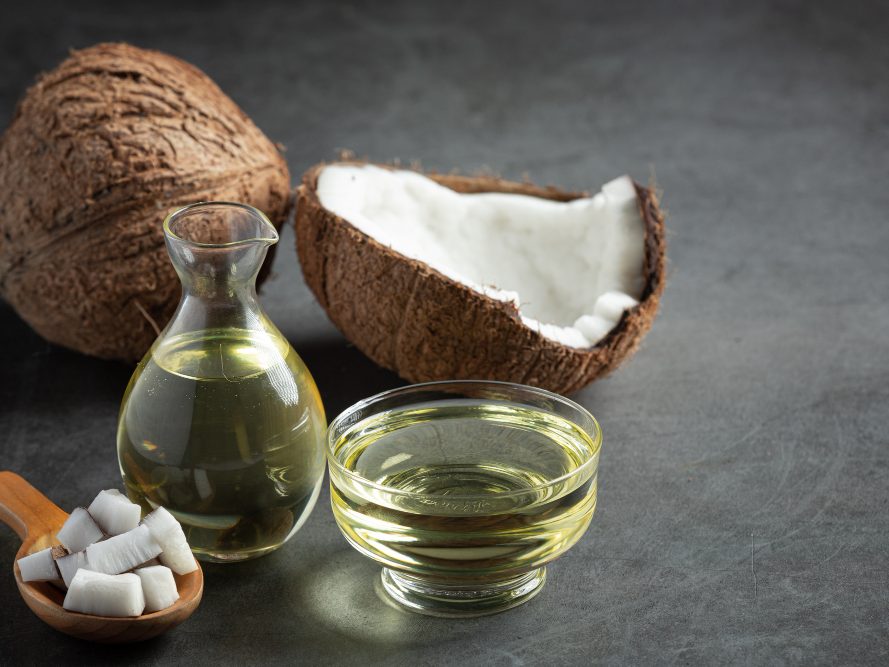
Yeah, hot oil treatments are a fantastic way to care for your scalp. Hot oil treatments strengthen your hair from the roots.
They are great to treat scalp issues like dandruff, and they help with frizz or dryness that's common with type 4 hair. It's also key to mention that they give your hair that luster and shine.
Now, there are a few things you should note about using hot oil treatments.
- Just because it says “hot” oil treatment doesn't mean you should use boiling oil- this will scald your scalp. Keep the temperature warm and test it on a small portion before total application.
- If you are doing a hot oil treatment for the first time, use oils that are good for your hair type and stay away from oils you are allergic to. Your best bet is to speak to a doctor.
How to make a simple hot oil treatment at home to improve your scalp health
What you need:
- Oils of your choice, both carrier and essential oils. Or an already prepared oil mix from your favorite hair brand is fine.
- 2 bowls- A glass bowl or heat-safe container and a bigger container that'll contain the heat-safe container.
- Hot water
- Plastic shower cap or plastic bag
How to do it:
- Depending on the volume of your hair, pour the oil mix in the right quantity into the glass bowl or container.
- Pour the hot water into the second bowl. Then place your glass bowl inside. The goal is for the hot water to heat up the oil.
- Once the oil is hot enough, place a little on your wrist to be sure the temperature won't scald your scalp.
- With your palm or applicator bottle, apply the oils to your scalp and massage with your fingers. Then gently work your fingers through the root all the way down to the tip of your hair. You can use a wide-tooth comb to do this, too.
- Once that is done, cover with the plastic shower cap or bag for about 15-30 minutes.
- Wash off with a shampoo and continue with your regular wash day routine.
A simple yet effective way to revive your scalp and grow healthy hair.
6. Eat healthy food to promote scalp health from within

As you know, your hair reflects what you eat. So, eat healthy foods to nourish your hair from within. Drink a lot of water to stay hydrated and stop smoking.
7. Stop stressing your scalp with tight hairstyles
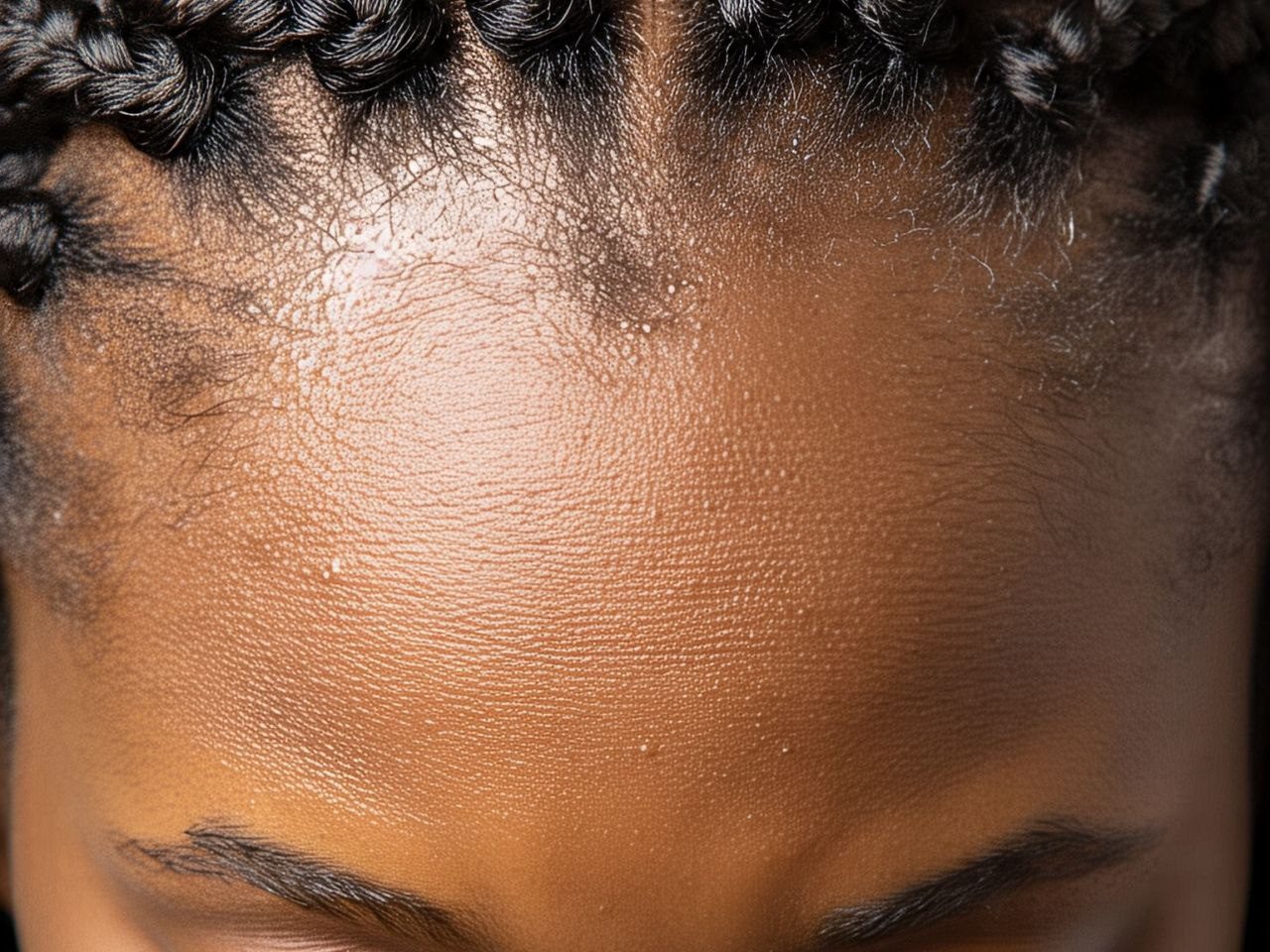
Apart from the effect on your hair strands, constant tension from tight hairstyles can traumatize your scalp, leading to weakening of the hair follicles, which can cause traction alopecia.
So, if you are wearing braids or an up-do bun and you feel pain, a burn or notice boils around your scalp, it's a sign that the hairstyle is too tight.
To protect your scalp from damage, try other hairstyles that don't strain or stress your scalp.
8. Protect your scalp from harsh weather and chemicals
UV rays, harsh chemicals from dyes or products can damage your scalp. Use a hat or scarf when you have to be out for too long under the sun. If your hair product contains UV filters or screens to keep your hair protected.
Consistently blow-drying your hair can dry out and irritate your scalp over time. Try air-drying your hair frequently to give your scalp a break from direct heat.
Wrapping up
With these 8 steps, you are well on your way to treating your scalp right and growing beautiful hair. Remember, hair doesn't grow overnight, but with consistent little steps it makes all the difference.
Do you have special healthy scalp care habits you'd like to share? Join the HairTalk community and share with other ladies.
